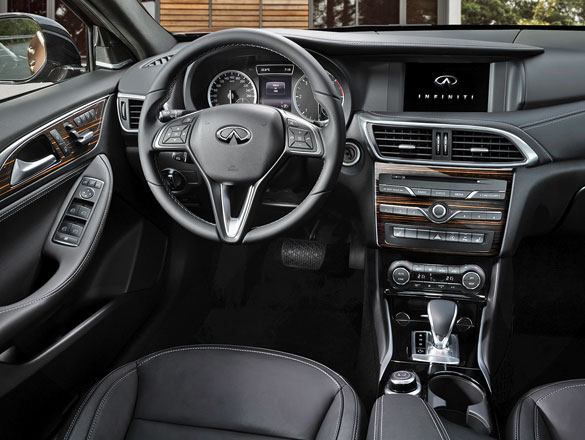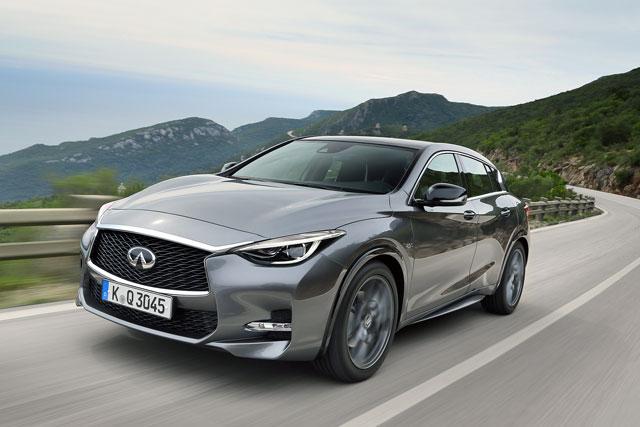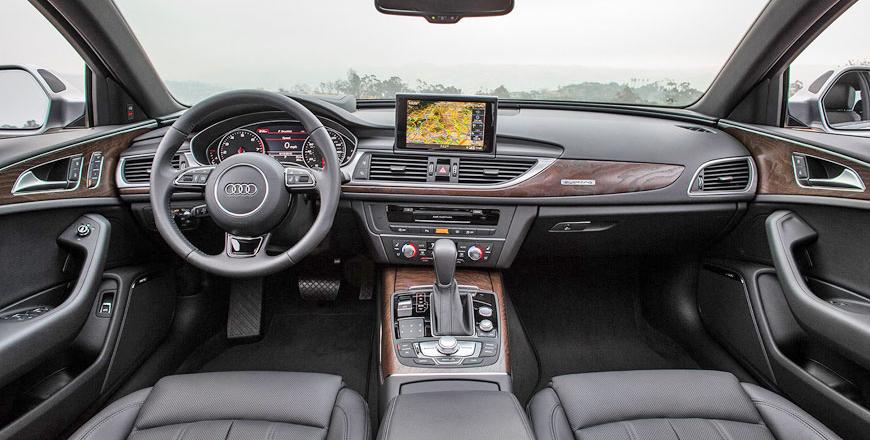You are here
Infiniti Q30 1.6t DCT: Predatory posture
By Ghaith Madadha , AFP - Jan 08,2018 - Last updated at Jan 08,2018

Photos courtesy of Infiniti
Infiniti’s take on the premium compact hatchback segment, the Q30 is stylishly swooping, with a sportily agile, yet, composed driving experience to match its aesthetic. Designed to take on the likes of the Audi A3, Volkswagen Golf and its own Mercedes-Benz A-Class relation, the Q30 is practical, well-equipped and well-appointed inside.
Not quite a straightforward family hatchback, the Q30 walks a fine line between the sportier coupe-like and crossover-influenced ends of the segment, and features both rakishly low roofline and discreetly taller ride height.
Stylishly swooping
European flavoured in how it drives with as most Infinitis are, the UK-built Q30, however, goes a step further and – and as part of a platform and technology sharing partnership — is based on a Mercedes-Benz underpinnings, mechanicals and other components that both its A-Class and the GLA-Class rivals are based on.
Ostensibly pitched at the former the Q30, however, leans somewhat toward the latter higher riding Mercedes and can rightly be viewed as a rival to other mild hatchback crossovers like the Volvo V40 Cross Country.
With gaping, weaving grille, scowling headlights and swooping, jutting lines and ridges combined with high ground clearance and low roofline, the Q30 has a dramatically stalking and urgently predatory posture, as if it is ready to leap forward.
Complex yet fluent, its wavy lines, sculpted surfacing, sharply defined creases and wide and squat stance, are complemented by a big wheel-arches, well filled by large optional 19-inch alloys. From inside, its low seating and long and scalloped bonnet provide a distinctly sporty and hunkered down ambiance.
Mid-range muscle
The smaller of two Mercedes-sourced turbocharged direct injection four-cylinder engines available, the mid-range Q30 driven with 1.6-litre and dual clutch transmision (DCT) is tuned to develop 184lb/ft torque throughout a broad, flexible and highly accessible 1250-4,000rpm, and 154BHP at 5,300rpm.
Driving the front wheels through its slick and quick-shifting automated 7-speed gearbox, the Q30 powers its 1,469kg mass through the 0-100km/h acceleration benchmark in 8.9 seconds, and can attain a 215km/h top speed. Meanwhile, fuel consumption is restrained at 5.9-litre/100km on the combined cycle.
Though willing to spin past 6,000rpm when pushed hard through brisk countryside drives, the Q30 1.6t DCT’s engine’s best performance is to be had lower in the rev band. With maximum power arriving as early as 5,300rpm and broad and generous torque, the Q30 is just as effective riding its wave of mid-range muscle as one goes through gears using its steering-mounted paddle shifters. Responsive and with meaningful pull from low-end, the Q30 suffers little turbo lag from standstill, with front wheels soon scrambling to put power to ground.
Smooth and settled
Muscularly in mid-range and confidently capable of accumulating speed, the Q30 has a stable, settled and smoothly firm highway ride. Similarly committed through sweeping corners, the Q30’s wide optional 235/45R19 tyres provide good grip in and out of corners.
Similarly committed through sweeping corners, the Q30’s wide optional 235/45R19 tyres provide good grip in and out of corners.
Turning tidy and crisp, the Q30 is resilient to understeer unless too much torque is unleashed through too tight a corner. With measured inputs, the Q30 well-claws into tarmac, as it weaves through narrow winding switchbacks. Steering is meanwhile quick, meaty and precise steering if not layered with nuance and road feel.
A fun car to drive briskly through sprawling, yet, narrow switchbacks, the Q30 feels planted, secure and grippy through corners, yet agile and adjustable. Turning in early and blasting through a corner, it is committed and eager, but with mid-corner lift-off, is also happy to shift its weight and tighten a cornering line before one comes back on the power. Riding with a buttoned down feel, the Q30 is settled and taut over crests and dips, and on rebound, while body control is taut and flat through corners.
Elegant and ergonomic
Smooth and reassuring yet slightly on the firm side with optional 19-inch alloy wheels, as driven, the Q30 is comfortable, but would be more forgiving with standard 18-inch wheels. Refined and quiet inside, the Q30’s cabin has a dark, sporty and ensconced ambiance. Driving position is highly adjustable, supportive, comfortable, ergonomic and spacious with good front visibility.
But with its rakish pillars and roofline, and bulging bodywork, the Q30’s rear parking monitor and sensors were particularly handy, and so would its optional blindspot warning.
Driven with dark fabric upholstery and glossy black trim, the Q30 had a stylish, sporty and elegant, but not overstated, ambiance, with logical and driver oriented layouts and design, including a chunky steering wheel.
Rear space was adequate with taller front occupants and better with seats slid further forward, while 430-litre boot volume is uniformly shaped and useful. Well-equipped, the Q30’s standard features include lane departure and collision warnings, rain sensing wipers, adaptive braking, cruise control, dual zone climate control and 7-inch infotainment system with Bluetooth, dual USB ports and voice recognition.
TECHNICAL SPECIFICATIONS
- Engine: 1.6-litre, turbocharged, transverse 4-cylinders
- Bore x stroke: 83 x 73.7mm
- Compression ratio: 10.3:1
- Valve-train: 16-valve, DOHC, variable timing, direct injection
- Gearbox: 7-speed dual clutch automated, front-wheel-drive
- 0-100km/h: 8.9-seconds
- Maximum speed: 215km/h
- Power, BHP (PS) [kW]: 156 (154) [115] @5300rpm
- Specific power: 96.5BHP/litre
- Power-to-weight: 104.8BHP/tonne
- Torque, lb/ft (Nm): 184 (250) @ 1250-4000rpm
- Specific torque: 156.7Nm/litre
- Torque-to-weight: 170.1Nm/tonne
- Fuel consumption, combined: 5.9-litres/100km
- CO2 emissions, combined: 136g/km
- Fuel tank capacity: 50-litres
- Length: 4425mm
- Width: 1805mm
- Height: 1495mm
- Wheelbase: 2700mm
- Track width, F/R: 1561/1559mm
- Aerodynamic drag co-efficient: 0.32
- Luggage volume: 430-litres
- Kerb weight: 1469kg
- Steering: Electric-assisted, rack and pinion
- Turning circle: 11.4-metres
- Suspension, F/R: MacPherson struts/multi-link
- Brakes: Ventilated discs, 295mm/discs, 295mm
- Tyres: 235/45R19
Price, starting from: JD30,900 (on the road, no insurance)
Related Articles
Arguably Japan’s most accomplished premium automotive brand, Infiniti vehicles traditionally sold in its ostensible home market under the up
Revised and rebadged in line with Infiniti’s evolving brand design, identity and “Q” prefix alpha-numeric nomenclature, the Q70 seamlessly r
Sophisticated and smooth, quick and confident, and well equipped and elegant but uncomplicated, the Audi A6 is a well thought out and execut



















